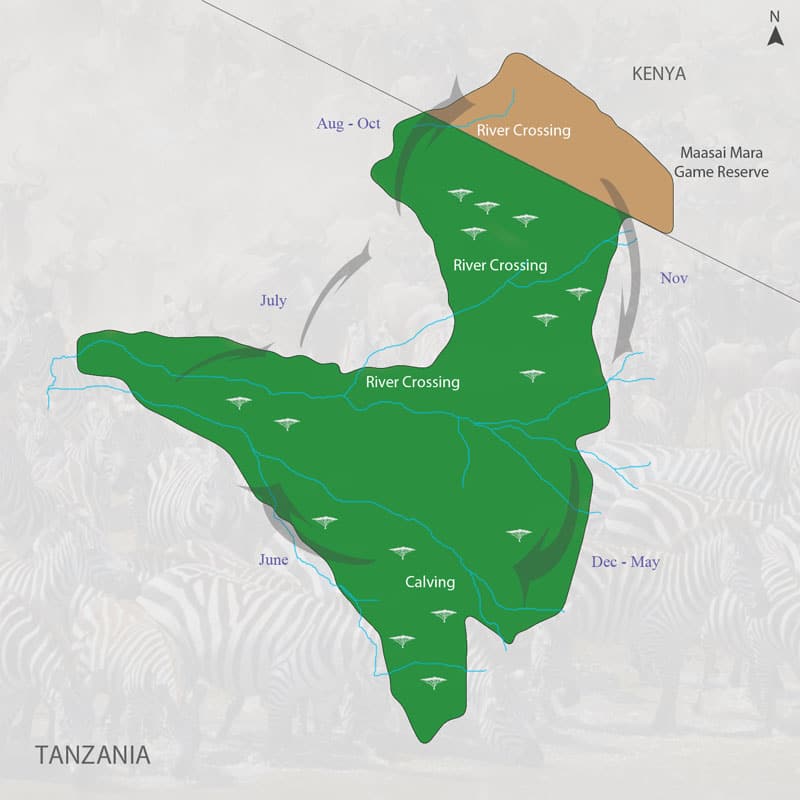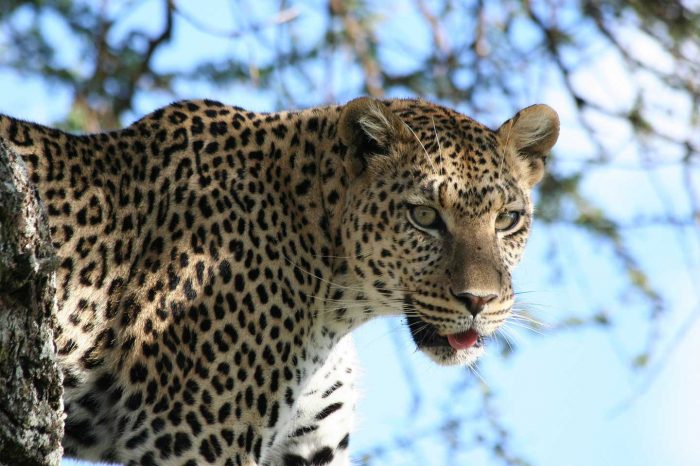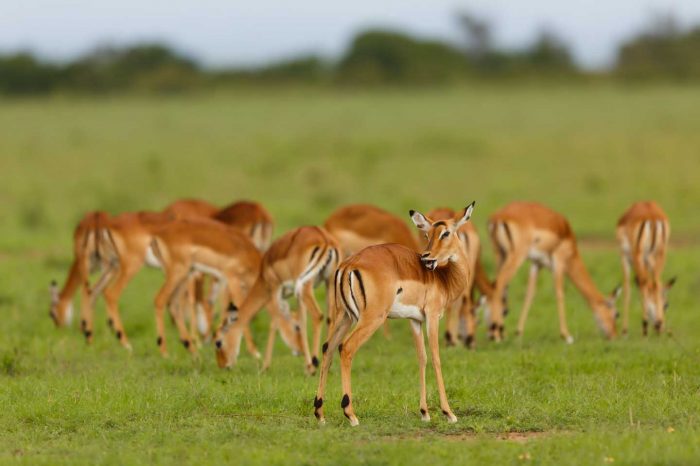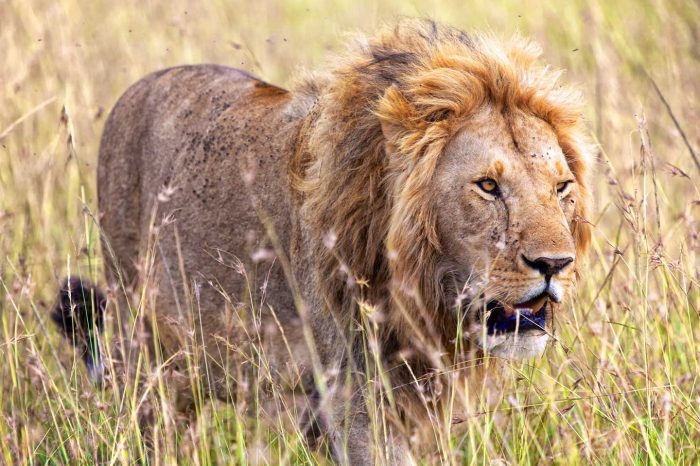SERENGETI NATIONAL PARK
The Serengeti National Park lies in between the shores of Lake Victoria in the Eastern side and Kenya’s Masai Mara to the Northwest. with hills rising out of the seemingly endless plains, rivers and small lakes, magnificent rocky outcrops and the occasional […]
The Serengeti National Park lies in between the shores of Lake Victoria in the Eastern side and Kenya’s Masai Mara to the Northwest. with hills rising out of the seemingly endless plains, rivers and small lakes, magnificent rocky outcrops and the occasional swamp add to the memorably breath taking scenery of the safari park’s fascination.
Serengeti’s prodigious wild life, the animals, native people, vast plains and varied topography create a variety that’s unmatched by any park on earth. This is the place almost that rings in everybody’s mind whenever the words “African Wildlife Safari” come to mind. It would probably be enough that Serengeti, established in 1951, is the greatest preserve of plains and animal species conservation on earth.
The list of wildlife species inhabiting the Serengeti plains is almost overwhelming: wildebeest, zebras, lions, elephants, giraffes, hyenas, leopards, cheetahs, hippopotamus, buffalo, eland, reedbucks and jackals live, prosper and die in wild, unfettered surroundings displaying a formidable rule of the food chain’s “survival for the fittest”. There are about 500 different species of birds, including flocks of flamingos that turn the sky into a mile-long of swirling pink clouds when they take flight.
It is the chance to see such abundant life in its natural surroundings that draws so many visitors here where the strength of the park is surpasses the extravagant gifts of nature. An excellent insight lies behind its organization.
THE MEANING OF THE SERENGETI
Serengeti, whose name in Maasai language of the natives means “endless plains,” has been laid out to accommodate the migration of the wildebeest, the homely grazing animals whose 2-to-3-million-member herd plays the dominance attraction and starring role in the park.
The Serengeti National Park is broadly divided into three distinct areas, the Seronera Valley and the Seronera River, the Western Corridor and the Northern Lobo area that extends northwards to joining the Maasai Mara on the Kenyan side.
THE SERONERA VALLEY
The Seronera valley is the most popular entrance to the Serengeti is the southern Naabi Hill Gate, which opens onto the Seronera Valley, a vibrant wildlife area at the heart of the Serengeti. The Seronera is characterised by basically a wide open grassy plain patched together within a network of rivers that ensure all year-round water supply keeping this region incredibly rich in wildlife due to its fertility. This region is particularly studded with distinctive rock kopjes, random collections of huge granite rocks, weathered through a generation of ages to form distinctive softened shapes rising out of the plains; a haven of shade and water for all animals through the dry season. The Seronera Valley hosts herds of buffalo, topi, hartebeest and impala, waterbuck, reedbuck and dikdik, numerous giraffe, warthog, and a rich pageant of birdlife of all colours and sizes. The large prides of lion here are renowned in this area, rolling southern plains down to the Naabi Gate are the areas in Tanzania in which you are most likely to encounter cheetahs. The lines of sausage trees along the Seronera riverbanks provide the perfect environment for languid leopards to camouflage themselves on sun-dappled branches, and lions roam at large throughout.
The Western Corridor
To the west of the Serengeti, the Seronera branches out along the westerly reaches of the Grumeti River, in an area called the Western Corridor. This area is more wooded than the Seronera, and although it still has a descent population of resident game it is harder to spot them in the bush. It is necessary taking a guide knowledgeable of the area. This region is particularly worth visiting in June and July, when the migration moves northwards from the Seronera and must face up to the often fatal challenge of jumping across the crocodile-infested Grumeti River. Many of these resident crocodiles rely entirely on this spring-time annual feast, and spend the subsequent months of the year in an idle, yellowtoothed, mud-covered wait.
THE NORTHERN SERENGETI AND LOBO AREA
The Northern Serengeti landscape changes as you head north from Seronera beyond the Orangi River as the land opens out into wide open Togoro plains, clear and sunbaked and seemingly perfect cheetah terrain, although they are rarely spotted here. The route continues like this for about three hours, until you reach the hills and huge worn-smooth rock kopjies of the Lobo area, haunt of at least two extended lion prides. Further north is the Mara River, which marks the border between the Serengeti and the Maasai Mara in Kenya. Although a passable road leads across, the border crossing is closed to tourists.
THE SERENGETI MIGRATION
 The endless plains of the Serengeti are the setting for the world’s greatest wildlife spectacle – the 1.5 million plus wildebeest migration. From the vast Serengeti plains to the champagne colored hills of Kenya’s Masai Mara featuring over 1.4 million wildebeest and 200,000 zebra and gazelle, relentlessly tracked by Africa’s great predators, migrate in a clockwise fashion over 1,800 miles each year in search of greener pastures, translated rain ripened grass.
The endless plains of the Serengeti are the setting for the world’s greatest wildlife spectacle – the 1.5 million plus wildebeest migration. From the vast Serengeti plains to the champagne colored hills of Kenya’s Masai Mara featuring over 1.4 million wildebeest and 200,000 zebra and gazelle, relentlessly tracked by Africa’s great predators, migrate in a clockwise fashion over 1,800 miles each year in search of greener pastures, translated rain ripened grass.
For the a stampede of a wildebeest’s journey, its life is an endless pilgrimage, a constant search for greener pastures, food and water. The only beginning is at the moment of conception, the calving season. An estimated 400,000 wildebeest calves are born during a six week period early each year – usually between late January and mid-March.
HOT-AIR BALLOON SAFARIS
Another very popular option to gain a bird’s-eye view of the Serengeti wildlife below is from a hot-air balloon. An early morning departure, gentle lift-off, the lush rolling expanse of the Serengeti plains below, and a romantic champagne breakfast to complete this safari, a very special and unforgettable Serengeti experience.
Below are safaris that might interest you for Ngorongoro Crater
Related Tours

SERENGETI NATIONAL PARK ITINERARIES
SERENGETI NATIONAL PARK( DAR ES SALAAM) Itinerary:4 NIGHTS / 5 DAYS

TARANGIRE / MANYARA / SERENGETI / NGORONGORO
TARANGIRE/MANYARA & SERENGETI/NGORONGORO Itinerary:6 NIGHTS / 7 DAYS
GAZELLE SAFARIS, TANZANIA
CONTACTS US
Do you have any comments? any suggestions?
Email: info.sales@gazellesafaris.com
Website: www.gazellesafaris.com+255 25 250 2482
FOLLOW US

